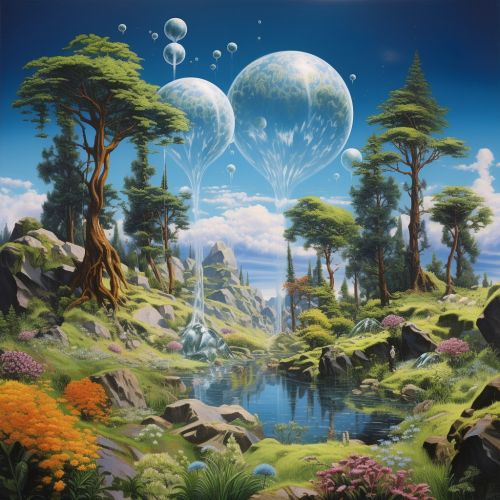Physical geography
Introduction
Physical geography, also known as geoscience or earth science, is a branch of natural science that deals with the study of processes and patterns in the natural environment. It involves the understanding of the atmosphere, hydrosphere, biosphere, and geosphere, as well as the interactions between these spheres.
The Atmosphere
The atmosphere is the gaseous envelope surrounding the Earth. It plays a crucial role in the support of life by providing oxygen and carbon dioxide for respiration in plants and animals. It also protects life on Earth by absorbing ultraviolet solar radiation and reducing temperature extremes between day and night.


The Hydrosphere
The hydrosphere encompasses all water on Earth, including oceans, seas, rivers, lakes, groundwater, and the water vapor in the atmosphere. It is a critical component of the Earth system, playing a key role in the global climate and supporting a wide variety of life forms.


The Biosphere
The biosphere is the global sum of all ecosystems. It can also be termed the zone of life on Earth, where living organisms exist. The biosphere is a vital component of the Earth system, as it influences and is influenced by the other spheres, including the atmosphere, hydrosphere, and geosphere.


The Geosphere
The geosphere is the solid part of the Earth, including the crust, mantle, and core. It includes all minerals, rocks, and the structure of the Earth's interior. The geosphere plays a crucial role in the Earth system, as it influences the structure and processes of the other spheres.


Interactions Among the Spheres
The interactions among the atmosphere, hydrosphere, biosphere, and geosphere are complex and multifaceted. These interactions shape the physical environment and influence the distribution and diversity of life on Earth. For example, the geosphere and atmosphere interact to influence weather and climate, while the biosphere and hydrosphere interact to support life in aquatic environments.


Conclusion
Physical geography is a vast and complex field that encompasses the study of the Earth's atmosphere, hydrosphere, biosphere, and geosphere. It provides crucial insights into the processes and patterns that shape the natural environment and support life on Earth.
